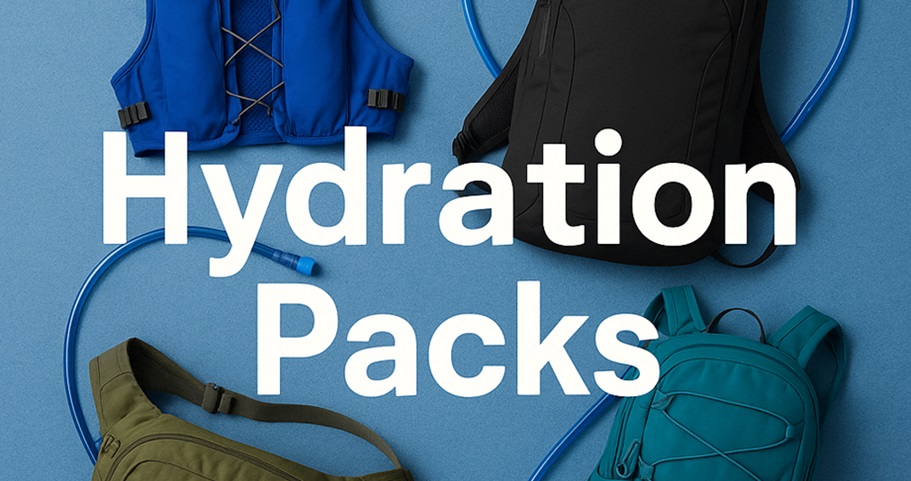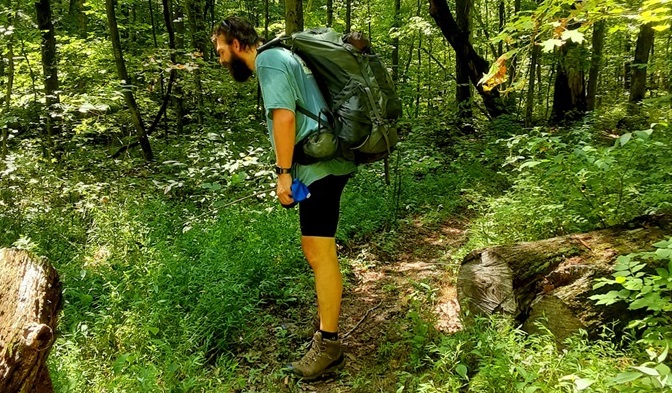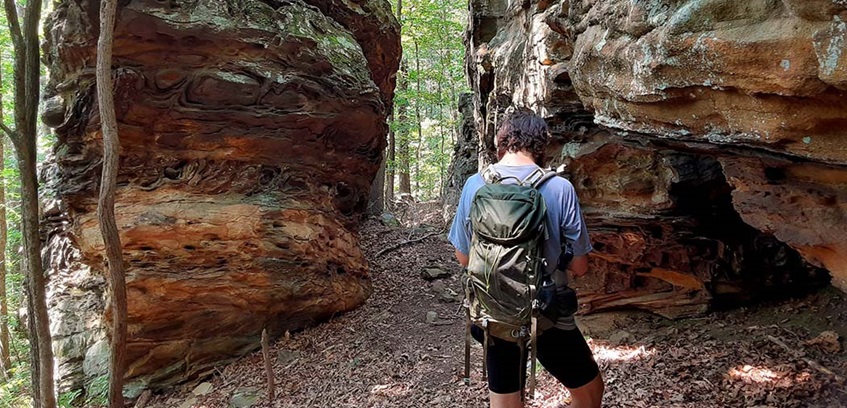How to Choose the Right Hydration Pack for Hiking
Dehydration can ruin a great hike fast but choosing the right hydration pack for hiking can keep you energized, balanced, and focused on the trail—not on thirst.
A hydration pack lets you stay hands-free, carry more water, and sip as you go. It balances your load, keeps your pace steady, and helps you hike longer and more comfortably.
This guide breaks down everything you need to know to choose the perfect hydration pack—whether you’re a day hiker, trail runner, photographer, or parent with kids in tow.
By the end, you’ll know exactly which hydration pack for hiking fits your needs, budget, and adventure style.
How Much Water Do You Need?
Before buying any hydration pack, it’s smart to understand how much water your body really needs on a hike.
As a general rule, drink 0.5–1.0 liters per hour.
In hot or humid weather, drink more.
Altitude, steep climbs, and heavy packs all increase your water demand.
Bladders come in 1, 1.5, 2, and 3-liter sizes. If you hike long distances, go with at least 2 liters.
Tip: Add electrolytes when it’s hot—they replace salt lost from sweat and help you stay hydrated longer. Just remember to clean your bladder thoroughly afterward.
Types of Hydration Packs for Hiking
Not all hydration packs are the same. Choose one that fits your hiking style.
- Daypacks with built-in sleeves — The most common option. Usually hold 2–3 liters of water and 10–35 liters of gear. Perfect for most hikers.
- Running vests — Compact and snug, holding 1–2 liters of water with limited gear space. Great for fast hikers and trail runners.
- Waist or hip packs — Lightweight and simple, holding up to 1.5 liters. Ideal for short hikes or local trails.
Many hikers bring both a bladder and bottles—extra water for drinking and cooking.
Fit & Sizing Tips
A hydration pack should fit like a hug, not a hassle.
- Measure your torso before buying—some packs list torso length.
- Adjust harnesses and sternum straps for balance.
- Choose a pack with a hip belt to move weight off your shoulders.
- Try it on loaded (5–10 lbs.). Walk, bend, and jump. If it doesn’t bounce or slosh—you’ve found your fit.
Women’s and plus-size fits offer even more comfort for different body types.
Hydration Bladder Details
Your water bladder is the heart of your pack—choose wisely.
- Size: 1L–3L depending on hike length.
- Opening style: Snap, zip, or screw-top—pick what’s easiest to clean and fill.
- Shape: Long and narrow fits most packs.
- Hose routing: Make sure it’s easy to reach while hiking.
- Bite valve: Check how it opens and how well it seals—this prevents leaks.
Storage & Organization
A good hydration pack helps keep your gear organized and accessible.
Look for:
- A main compartment for essentials
- Front stretch pockets for quick-access items
- Hip-belt pockets for snacks or your phone
- Bottle sleeves or trekking pole straps, depending on your adventure style
Comfort & Quality
Comfort can make or break your hike.
- Back panel: Mesh or ventilated for airflow
- Shoulder straps: Padded for longer comfort
- Weight: Lighter packs = less fatigue
- Balance: A well-designed pack shouldn’t pull to one side
Materials & Durability
Most hydration packs are made from nylon or synthetic materials—tough but easy to clean.
Check for BPA-free bladders and durable stitching.
Read reviews about long-term use before buying. A quality pack should last years, even with heavy trail use.
Weather & Conditions
Different weather = different care routines.
- Hot & humid: Clean after every hike to prevent bacteria.
- Cold & freezing: Use an insulated bladder or hose to avoid ice buildup and cracking.
Hygiene & Maintenance
Clean your pack regularly—inside and out.
Use warm water + mild soap and let it air dry completely.
Check for:
- Leaks
- Loose hoses
- Rips or tears
Bladders usually wear out faster than the pack itself, but some brands offer replacement warranties.
Budget & Value
You don’t need to spend a fortune to stay hydrated.
- Under $75: Great starter packs from CamelBak, Osprey (Sylva), and Teton Sports.
- $75–$140: Mid-range Osprey or REI Co-op models with more comfort and storage.
- $140+: Premium hydration packs with advanced ventilation and larger capacity.
Personal note: I’ve used Osprey Packs for years—they’ve never let me down.
Common Mistakes to Avoid
Avoid these beginner pitfalls:
- Ignoring sizing and fit → causes pain and strain.
- Forgetting electrolytes → leads to fatigue.
- Skipping cleaning → mold and bacteria grow fast.
- Overloading your pack → water weight adds up!
Final Thoughts
When choosing a hydration pack for hiking, focus on:
- Capacity (both water + gear)
- Fit & comfort
- Durability & features
But above all—remember to drink often.
Even the best pack won’t help if you’re not staying hydrated.
Want More Hiking Tips?
If you found this guide helpful:
- Subscribe to my free monthly newsletter for hiking tips, gear guides, and Southern Illinois event updates.
- Join my free online community for hikers, backpackers, and trail runners.
- Support my work on Patreon for exclusive content and behind-the-scenes stories.
And until next time — I’ll see you on the trail.

Shawn Gossman
Founder, Hiking with Shawn
Howdy folks! My name is Shawn Gossman and I founded Hiking with Shawn. I’m an avid hiker, cyclist and outdoorsman here in the Shawnee National Forest. I was born and raised in Southern Illinois and never want to leave. Click here to learn more about Shawn Gossman





